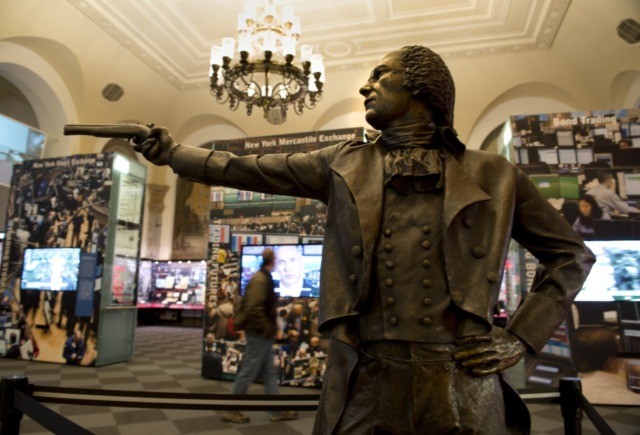Donald Trump may not have had much luck in getting the Fed to push down its interest rate target in recent months but investors on Thursday were happy to push down the rate the government pays to borrow.
The U.S. Treasury sold $19 billion of 30-year bonds with a yield of 2.061 percent on Thursday. That is the lowest ever recorded for such a long-term bond.
To put that in perspective, the Congressional Budget Office in January projected that the yield on 10-year notes would average 1.9 percent this year, 2.2 percent next year, and then march toward 3 percent by 2025. The record low yield on the 30-year bonds issued today out the idea of rising rates on shorter-term bonds very much into question.
Looked at another way, the Fed’s target for overnight rates was a range of 2 percent to 2.25 percent as recently as August. In other words, just six months ago, banks were paying around the same rate to borrow overnight what the U.S. Treasury agreed to pay for a 30-year bond.
The low yield also raises questions about whether textbook economics has something wrong when it comes to budget deficits and interest rates. In case it has been a while since you sat in an economics class or read a CBO report, the standard line is “greater federal borrowing is projected to put upward pressure on interest rates.”
Yet earlier this week, the U.S. Treasury announced that the budget deficit for the first four months of fiscal 2020 is $389.2 billion. The CBO’s estimate of the deficit for 2020 is now $8 billion more than the agency projected in August 2019. For the next decade, the CBO’s latest projections have deficits at $160 billion higher than the August projection. Back when the CBO was making those August calculations, the 30-year Treasury was yielding about 2.5 percent. So larger deficit projections have coincided with lower interest rates.
Demand for the bonds was extreme. Buyers placed $2.43 of bids for every $1 of Treasuries sold on Thursday.
A big driver of the demand for the 30-year at such a low yield is the fact that some $14 trillion of debt now has negative yields. Compared with that, the rate offered by the U.S. Treasury seems like a steal. Which brings us back to President Trump: maybe he has a point when he complains that the U.S. government is over-paying to borrow.

COMMENTS
Please let us know if you're having issues with commenting.